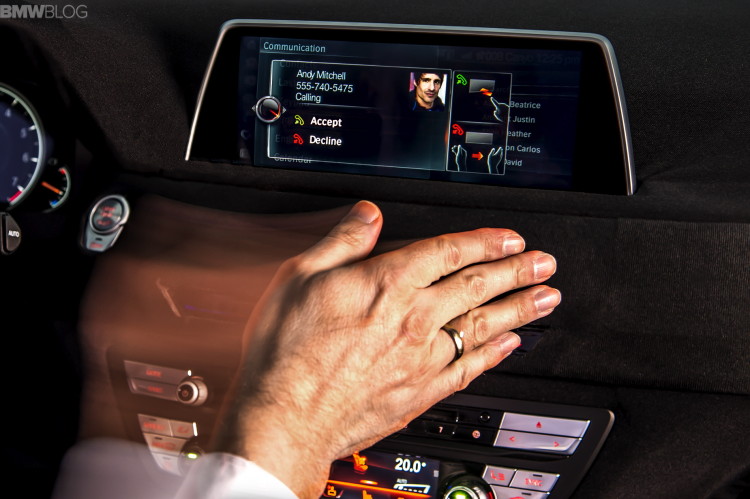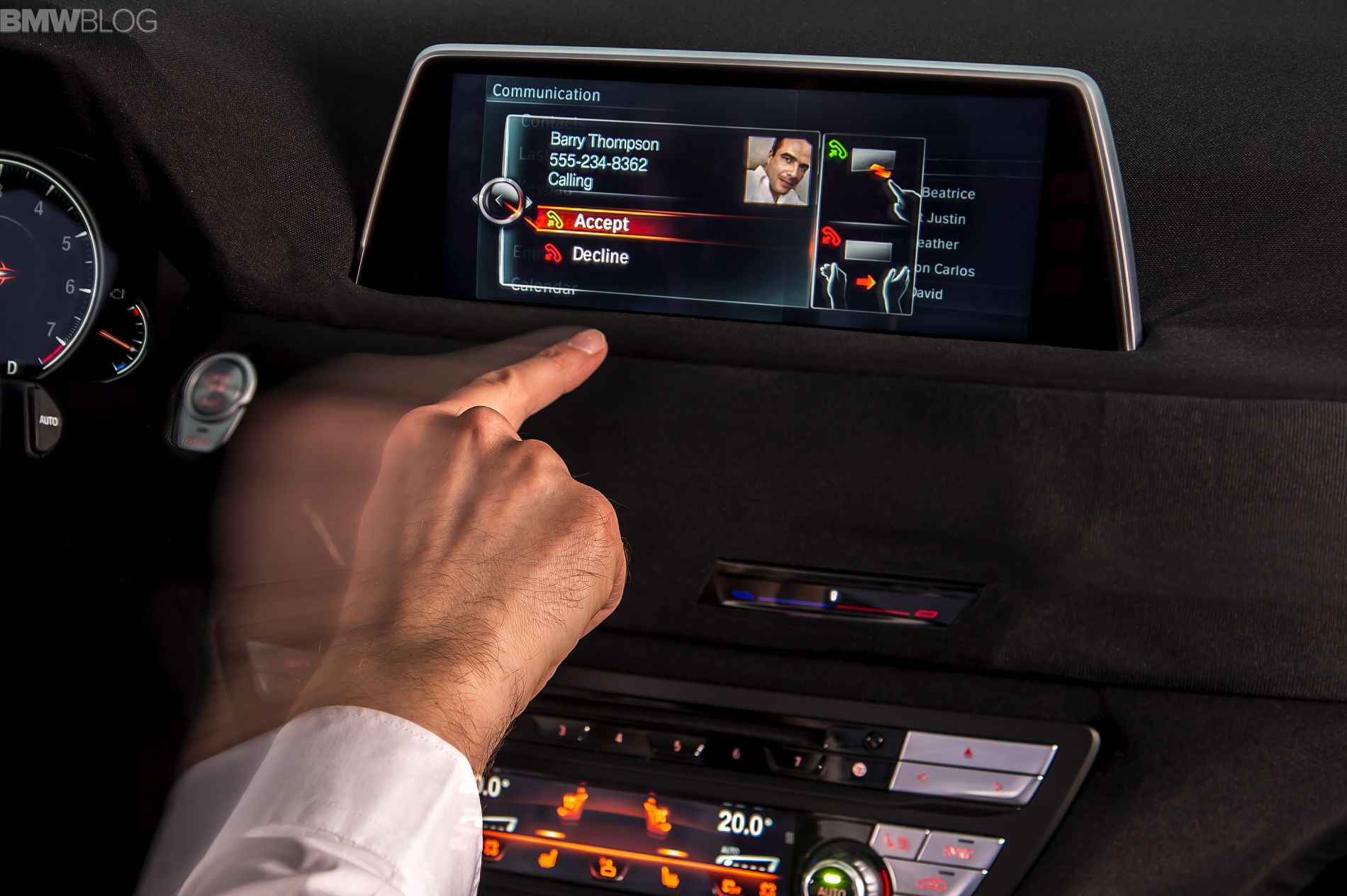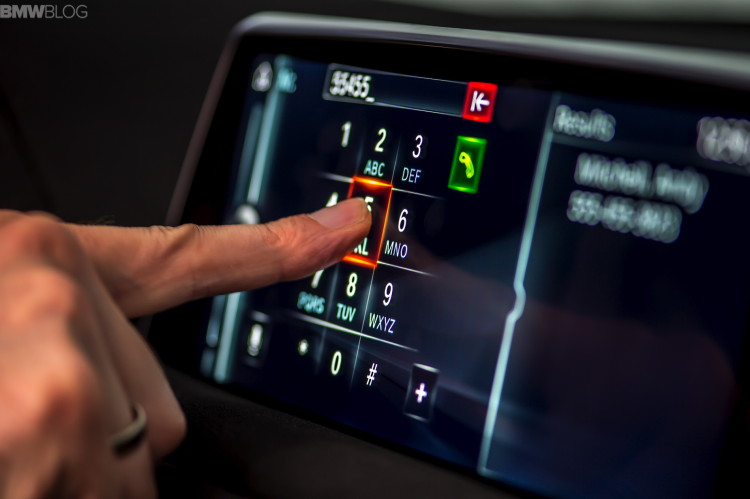BMW’s gesture control wasn’t a hit when it debuted back in 2015. Press either ignored it entirely, couldn’t operate it, or found it to be redundant. Worse still: as recently as this year, some well-respected outlets have even reduced it to “a gimmick”. Tragically, it seems BMW may have been listening. Gesture control has been dropping off models as of late – see the most recent 4 and 5 Series packaging. And while the root cause is potentially supply chain related, I’m not optimistic. This is dire, because BMW’s head might just have been in the right place when they started pursuing gesture control. Sadly, however, they were not in the right time.
Gesture control debuted in 2015, when touchscreens were just starting to really enter the mainstream. Consumers were – and still are – dead set on believing that the touch screen is the future. Even critical audiences weren’t often discussing the potential dangers of the touch screen yet. Today, tech-critical audiences endlessly rally against the widespread adoption of touchscreens in the automotive space. And there’s no shortage of good reasons.

Gesture Control’s Origins
Gesture-controlled systems have their roots as early as 1980. Most early systems depended on a combination of both voice and gesture and demanded the use of a wrist sensor. As technology progressed into the 1990s and early 2000s, incremental changes most extended to using different outside devices. Gloves, a pendant, and even fingertip devices are all examples of the baby steps gesture control took up until the 2010s. More familiar may be devices like the Nintendo Wii or Xbox Kinect.
Fast forward to 2015, where BMW implements a camera-based system into their newest 7 Series. Though camera-based systems had been done before, this was the first time it had been integrated into something as pedestrian as a car – and the first time it had been implemented at such an approachable scale. Gesture control in the 7 Series also laid the groundwork for what BMW dubbed “natural interaction” – a promise of vehicle interface comprised of gestures, looks, and voice commands.

The Problem that Gesture Control Solves in Cars
We can’t talk about how good gesture control is until we explain the problem it solves – and that problem is touch screens. While not inherently bad, touch screens create very bad habits while driving. The first of which is distracted driving. The most relatable comparison is adjusting your driving position in a car. You know where the lever, button, or switch is. And you could – likely very easily – adjust it without needing to look at it. If you’re really good, you might even be able to do this after sitting in the car only once or twice. Another good example is the volume knob – once you know where it is, you don’t necessarily need to look for it. This is good, easy, and most importantly safe design.
Touch screens remove that familiarity and instead require you to look away from the road in order to make a selection. And while most seat settings haven’t yet migrated to the screen, some automakers have moved things like climate control, drive modes, and even glove box operation to screen control only – and that sets a dangerous precedent.
Another problem is less serious but still important. Lazy design! Before touchscreens, car interiors made an important statement about the car. Cars like the A80 Supra and original NSX featured unique, well-designed and clearly driver-centric interiors. Sadly, that’s no longer the case when every OEM decides slapping a tablet on the dash is the recipe for success. Another design-centric problem is the fact that a screen encroaches on front-facing outward visibility.
Gesture Control’s Stacked Odds and Future
In 2015, touchscreens were catching on. But they weren’t quite everywhere, and most vehicles still had quite a few physical buttons. Arguably, there wasn’t a huge need for gesture control yet; a balance of touchscreen and physical buttons is quite ideal. Gesture control was unnecessary as it only performed functions that were otherwise performable via the iDrive controller or other physical buttons.
Even worse, mainstream media – even many BMW proponents – generally did not view gesture control favorably. Calling it redundant and gimmicky is the result of physical buttons being present – and this immediately sours public opinion, even before playing around with gesture control for yourself.
Finally, gesture control seems to have forever existed amidst a cloud of misunderstanding. Nearly nobody I know in the automotive industry took any amount of time to understand how gesture control worked, or why it was important and useful. Few outside of the BMW world even knew it existed! And why would they – the only press was negative. Not exactly presented as the cutting edge – because its usefulness hadn’t yet been realized.
So, sadly, with a future of touchscreens staring us back in the face, I fear that BMW may have abandoned what could have been a road forward. Imagine a gesture control that could turn on your heated seats, instead of having to select three different options on a touch screen? Or even integrating a voice and gesture function to ensure accuracy – the way gesture-based interaction began almost five decades ago.
Hopefully BMW has not taken the criticisms of gesture control to heart; they’ve been on to something for over half a decade. And if we’re doomed to a touchscreen future, I’d like mine with gesture control, please.
[Photos: BMW]






































































